Charlestown History
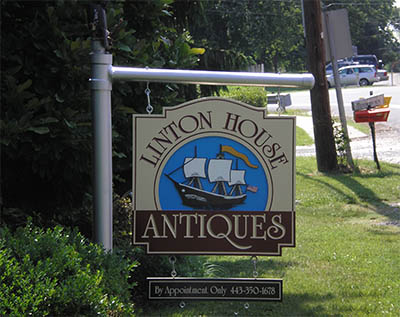 The town of Charles Town was established in 1742 by Act of the Maryland Assembly because, to quote the Act, “the encouragement of Trade and Navigation is the surest means of promoting the happiness and increasing the riches of every country . . . [and] . . . there being as yet no [town] settled at or near the head of the Chesapeake Bay . . .” The Assembly directed that “a place called Long Point on the west side of North East River in Cecil County” be the location of the new town and that it be named Charles Town. The name was derived from Charles Calvert, 5th Lord Baron of Baltimore Absolute Lord and Proprietor of the British Provinces of Maryland. A public wharf and a three-story warehouse were built. An inspector was appointed to ensure that only flour of superior quality was sold and shipped from Charlestown.
The town of Charles Town was established in 1742 by Act of the Maryland Assembly because, to quote the Act, “the encouragement of Trade and Navigation is the surest means of promoting the happiness and increasing the riches of every country . . . [and] . . . there being as yet no [town] settled at or near the head of the Chesapeake Bay . . .” The Assembly directed that “a place called Long Point on the west side of North East River in Cecil County” be the location of the new town and that it be named Charles Town. The name was derived from Charles Calvert, 5th Lord Baron of Baltimore Absolute Lord and Proprietor of the British Provinces of Maryland. A public wharf and a three-story warehouse were built. An inspector was appointed to ensure that only flour of superior quality was sold and shipped from Charlestown.
Charlestown evolved as a major port and taxation center for the British colony as well as a point along the “Old Post Road” that connected the Town with larger urban areas such as Baltimore and Philadelphia. During this time (1782 – 1787) Charlestown was also the county seat for Cecil County. Charlestown is the oldest Town in Cecil County and the third oldest town in the State of Maryland.
Charlestown’s most prominent history occurred during the colonial period and to just after the Revolutionary War (1742–1790). During the Revolutionary War, Charles Town was a major supply depot for the Continental Army.
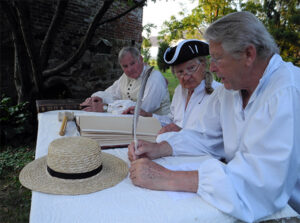 However, Charlestown’s early history is also significant. Many distinguished personages such as Benjamin Franklin, George Washington and the great American artist Charles Willson Peale frequented the Town. Washington recorded at least two occasions in which he dined and stayed in Charlestown. Other distinguished Charlestown residents included John Paca, the brother of William Paca and George Read, the father of Charles Read. Both men were signers of the Declaration of Independence.
However, Charlestown’s early history is also significant. Many distinguished personages such as Benjamin Franklin, George Washington and the great American artist Charles Willson Peale frequented the Town. Washington recorded at least two occasions in which he dined and stayed in Charlestown. Other distinguished Charlestown residents included John Paca, the brother of William Paca and George Read, the father of Charles Read. Both men were signers of the Declaration of Independence.
The Town’s most prominent resident, Nathaniel Ramsey, was a lawyer and 1767 graduate of Princeton University. He was married to Margaret Jane Peale, sister of Charles Willson Peale. During the Revolutionary War, Charlestown became an active participant in the conflict with Great Britain. Ramsay headed a group called the Council of Safety. This group assisted in the production of arms, ammunition, and uniforms as early as 1775. In 1776, he was commissioned as a Captain of the 5th Company of the Maryland 1st Regiment. During the 1778 Battle of Monmouth, Ramsay was promoted to Lieutenant Colonel and commanded the 3rd Battalion of the Maryland Regiment.
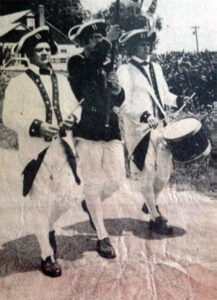
Photo: A Charlestown Colonial Regiment color bearer, flanked by fifer and drummer, marches with the unit at Earleville Saturday as the Earleville ’76ers stage a Bicentennial Preview. Left to right are Walter Heath, Bruce Buhrman and Ronnie Daniels.
The famous “Maryland Line” was known for its bravery and heroics during the war. Ramsay was personally charged by General George Washington to hold the British attack so Washington could save the Colonial Army through a necessary retreat. The entire 3rd Battalion were either killed or captured during the battle and Ramsay spent the rest of the war as a British prisoner. Following the war, Ramsay had a distinguished public service career including a term as Maryland Congressional representative (1786-1788), United States Marshal for Maryland and as an Officer of the Port of Baltimore.
Two incidents in Charlestown are recorded from the Revolutionary War. The first involved a blockading, British warship in the Charlestown Harbor that was captured and burned. The ship’s officers and men were marched through the streets of the Town. In August, 1777, the town was bombarded as a diversionary tactic while General Sir William Howe’s troops sailed up the Elk River to effect a landing. General Howe landed his approximately 15,000 troops at the Head of Elk, subsequently marching them north and culminating in the Battle of Brandywine.
During the War of 1812, the British sailed into the Charlestown harbor, which contained a small, deteriorated fort. Much of the Town’s populace fled to Foy’s Hill, leaving the Town virtually abandoned. British troops searched Charlestown and then sailed to Havre de Grace, where a larger battle occurred.
More Info: War of 1812 Event (PDF)
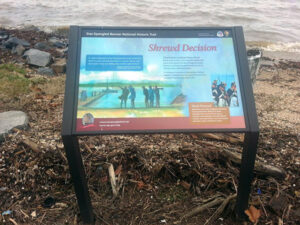 Charlestown experienced a gradual decline from 1780 through 1820, which was caused by decreased trade and shipping with the British Empire. When a severe hurricane in 1786 opened up the Locust Point Channel to Baltimore and made Havre de Grace an accessible, deep-water port, Charlestown’s prosperity began to falter. Many distinguished Charlestown residents tore down their houses and moved to Baltimore in disgust when the Town’s status as county seat was stripped away in favor of a town at the head of the Elk River – Elkton.
Charlestown experienced a gradual decline from 1780 through 1820, which was caused by decreased trade and shipping with the British Empire. When a severe hurricane in 1786 opened up the Locust Point Channel to Baltimore and made Havre de Grace an accessible, deep-water port, Charlestown’s prosperity began to falter. Many distinguished Charlestown residents tore down their houses and moved to Baltimore in disgust when the Town’s status as county seat was stripped away in favor of a town at the head of the Elk River – Elkton.
Over the course of time, harmed by the long-term effects of the Revolutionary War, by the realignment of the Old Post Road and better roads which lessened traders’ dependence on water transportation along with the establishment of Elkton as the new Cecil County Seat in the 1780’s, Charlestown slipped into gentle obscurity. This “deep sleep” allowed for the preservation of many of the Town’s historic resources into the present time.
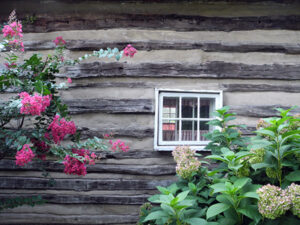 Thus did Charlestown escape the more devastating aspects of “progress.” Its heritage is preserved in the Historic District, which includes approximately 150 buildings. Most are the historic inns and amenities that served the populace during the busy colonial period. There are several Victorian buildings, but many structures that appear to be of late 19th or 20th Century origin are of a much earlier period, their true identities obscured by alterations applied over the decades.
Thus did Charlestown escape the more devastating aspects of “progress.” Its heritage is preserved in the Historic District, which includes approximately 150 buildings. Most are the historic inns and amenities that served the populace during the busy colonial period. There are several Victorian buildings, but many structures that appear to be of late 19th or 20th Century origin are of a much earlier period, their true identities obscured by alterations applied over the decades.
Some of Charlestown’s colonial historic sites and structures were once inns, taverns, and shops. As a port and mercantile Town, Charlestown did not have great and grandiose mansions but rather smaller working buildings. These buildings were suited for a municipal life that revolved around colonial government and services. Of architectural note, rare gambrel roof structures still survive in Charlestown including the “Red Lyon Tavern.” Early construction materials consisted of log, stone and brick. In addition, the Town is surrounded by significant archeological resources that predate colonial settlements and an abundance of sensitive natural resources.
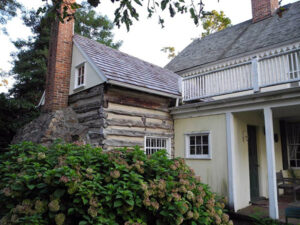
Cecil Cooper House (CE-395): This structure dates from the 19th Century and is located at the northwest corner of Louisa Lane and Water Street. It is a three story house with a slate, mansard roof in the Empire style. Maryland Historical Trust records indicate that the building was a private home in the 19th and 20th Centuries.
Cecil House Inn/Gamble House (CE-397): Located at Caroline and Bladen Streets, the “Cecil House Inn” is believed to be the site of an older structure once located along the Old Post Road. The brick house is listed as a four bay, two wing, Victorian structure two stories high. The building has a pitched gable roof, 2/2 windows, and narrow chimneys.
Cecil Hotel (CE-108; circa 1810): Located at Caroline and Bladen Streets, the “Cecil Hotel” is a two-story, frame, Federal structure that was once a tavern. The building has a gable roof and five bays. It sits on a high stone foundation sheathed in brick (a traditional English cellar) and still retains its original windows, front door, and semicircle arched fanlight. It is in the process of restoration.
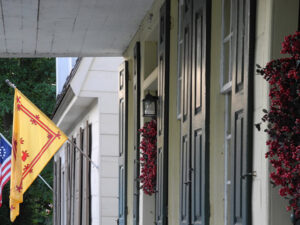
Charlestown Town Hall and Post Office (CE-388): Located on Market Street and constructed in 1878, the building served as an elementary school site until June 14, 1961. Fairgreen Park, a children’s park, is located behind this site.
County Jail Site/Proposed Courthouse Site (CE-396; circa 1750): The site that was proposed for the first “Cecil County Jail and Courthouse” was located at the corner of Frederick and Calvert Streets. The property is owned by the Town of Charlestown, Maryland. The only building constructed on the site in the 18th Century was a small jail.
Eagle Point Gun Club/Mulveny House (CE-389): Maryland Historical Trust records date the current structure to the early 1800’s. This property is shown in the 1813 sketch of Charlestown by Benjamin Latrobe. The house is located on a low bluff that overlooks the Northeast River. It was used for seasonal duck hunters on the Susquehanna Flats in the 19th and early 20th Centuries. Recently, additions have been made to the original house. Update: This property was destroyed in a fire in June of 2024. Information about rebuilding will be provided upon availability.
Frame Ice House (CE-1299): This ice house was built in 1890 by Perry K. Barnes. It is located at Water Street near the Charlestown’s Veteran’s Park. It is entirely constructed of eastern white pine planks and shiplap siding. A shed was later attached for fish net storage. More Info: Ice House Dedication (PDF)
Hamilton House (CE-107; circa 1755): The house was one of the oldest in Charlestown and was constructed by John Kankey. The structure was frame with clapboard siding and 9/9 windows. It had been located on Bladen Street and had a gambrel roof, being six bays long and two bays deep. In the rear of the structure was a log kitchen and chimney. According to the records of the Maryland Historical Trust, the “Hamilton House” was relocated from Lot 74 to Pennsylvania in the last quarter of the 20th Century.
Ice House (CE-1304): The “Icehouse” is a small stone structure located on Conestoga Street, near the colonial wharf.
Klondike/McKeown House (CE-109; circa 1900): This house is one of the few ornate Victorian structures located in Charlestown. In the late 19th Century, the McKeown brothers left Charlestown, making their fortunes in the western part of the United States from gambling in Nevada. The house’s construction is thought to be influenced by high Victorian architecture from San Francisco. The interior of the house maintains dark wood paneling which extends up two 15’ walls. There is a hexagonal, clapboard icehouse in the rear yard.
Lackey-Murphy House (CE-1301): Located on Baltimore Street, this structure was originally constructed in 1750. In 1865, a second floor addition was constructed. Modern additions were made in 2000. This house has been owned for over 100 years by the Murphy family.
Linton House (CE-110; circa 1787): Located at 316 Market Street, the “Linton House” was constructed by Charlestown Commissioner William Linton in 1787. George Washington recorded several visits to the structure on his travels along the Old Post Road from Philadelphia to Mount Vernon, in Virginia. The building is a handsome brick structure of Flemish bond with a gable roof and five bays. There is a brick belt course and molded water table on the front façade. A modern brick garage was added to the house on the west wing.
Mary Palmer Tavern (CE-398; circa 1790): This house was constructed during the late 18th Century and was one of the Town’s many taverns. It was owned and operated by Mary Palmer, a widow of the Revolutionary War. It is located adjacent to the Old Post Road. It is a three story, three bay structure side hall plan with a four bay wing off the south side. The original clapboarding is covered by aluminum siding.
Nathaniel Ramsay/Key-Ramsey House Site (CE-1300): Originally, the home of Francis Key, birthplace of John Ross Key and Father of Francis Scott Key composer of the “Star Spangled Banner.” This structure was indicated in Benjamin Latrobe’s 1813 sketch of Charlestown, located where the Charlestown Parsonage for St. John’s Methodist Church stands today. It was a brick house constructed during the colonial period of Charlestown. The structure burned in 1834 and is now registered as a future archeological site.
Northerman House (CE-380): Located at 225 Market Street, it is a two story, three bay, by two bay, frame dwelling with a gable roofed main section built by Jacob Northerman for a Philadelphia cooper. The structure was supposedly built in 1762 but has been altered. The original clapboard is located beneath a layer of asphalt shingles and an outermost layer of aluminum siding. Double parlors have two massive corner fireplaces, which are back-to-back.
107 House (CE-386; circa 1750): This structure, now the Charlestown Museum, is located at 343 Market Street. Deed research notes that a dwelling was built on Lot 107 of the Town’s original 1742 plat. The 107 House is an example of the many structures in Charlestown whose real origins have been cloaked by alterations performed over the centuries. Older records mention that there was a house at the location “built in the Dutch fashion.” Apparently the early building was partially destroyed and rebuilt around 1810 and the present two-story, three bay structure with side hall and double parlor plan was built atop the remains. The entire building has been restored by Colonial Charlestown, Incorporated and an original tavern kitchen has been restored in the cellar. The house was once thought to have been an 18th-century tavern run by “Tories” and confiscated during the Revolution but this legend has since been proven to be untrue.
Paca House (CE-111; circa 1750): John Paca, the brother of Governor William Paca a signer of the Declaration of Independence, lived in Charlestown during the mid-1700’s. The “Paca House” was sold in 1753 to Edward Mitchell, a Charlestown Commissioner. In 1770, the structure was described as a 20’ by 30’ frame dwelling. It is located at 315 Market Street. The west wing gambrel roof stone wing was added in the late 1700’s and connects the original building to the addition.
Post House/Holloway House (CE-384; 18th Century): According to Maryland Historical Trust records, the “Post House” is a frame and log construction building, possibly from the 18th century. The house is two stories high with a main section that is three bays by two bays. The structure is listed as one of the old inns of Charlestown along the Old Post Road, now MD Route 267.
Perry Barnes House (CE-387): This Victorian, frame structure is situated on top of a small hill on Market Street. The building is two stories high and three bays wide with a steeply pitched roof. The dwelling exhibits ornamental Victorian architecture.
Red Lyon Tavern (CE-128; circa 1750): The tavern is one of Charlestown’s most important historic sites and structures. Several significant buildings exist on the site. Varied and wide shiplap siding with beaded edges covers the façades of the buildings. Stone walls underpin the log structure creating a cellar, keeping room. A fireplace with a 5-foot wide opening is located in the cellar. There was a one room addition constructed in 1830. The Red Lyon is one of several structures in the Town that billeted the Royal American Regiment during the winter of 1756-1757, the beginning of the French and Indian War.
Samuel McNear House (CE-383): This is a frame structure that is two stories high located on Baltimore Street. It is three bays wide and covered with asphalt shingles with additions to the back of the building. This dwelling is thought to have been built in the late 18th Century, which may be evidenced by the large fireplace and cooking crane in the basement.
St. John’s Methodist Episcopal Church (CE-379; circa 1856): Located at Market and Bladen Streets, the “St. John’s Methodist Episcopal Church” was constructed in 1856. This church is distinguished by its geometric patterned stained glass windows.
Scott Jackson House (CE-1305): This house is located on the corner of Bladen and Caroline Streets. It was constructed in 1901 by Scott Jackson, a skilled local craftsman who executed all the wood trim in chestnut.
Shelton House (CE-1303): This house was constructed in 1872. It is located on Water Street and was built by George Shelton. The house is shown in the 1877 Cecil County atlas inset for the Town of Charlestown.
Still House (CE-393; circa 1760): The house is located on Lot 1 of the original Charles Town plat. It is a rambling frame structure built in 1760 and was one of Maryland’s early rum distilleries. Ships carrying grain and seafood would leave Charlestown for the West Indies and return with raw sugar for rum. Charlestown’s inns and taverns became known for their variety of cherry rum and brandy drinks. This property is shown in the 1813 sketch of Charles Town by Benjamin Latrobe.
The Indian Queen Tavern (CE-127; circa 1740): One of the founders of Charlestown, Zebulon Hollingsworth, was an inn-keeper who constructed the “Indian Queen,” the most significant historic resource in Charlestown. The building is a two-story, frame structure with an interior floor plan consisting of four rooms. The dwelling contains a massive center chimney and two, back-to-back fireplaces on the first and second floors. The house is of post and beam construction with clay and brick nogging for insulation. The Indian Queen has a gable roof and beaded shiplap siding. Interior woodwork is of the mid-18th Century period complete with some original hardware.
Thorn House (CE-1298): Located on Conestoga Street, the home faces the Northeast River and was originally designed as a retreat for Christopher Columbus Thorn, Chief Engineer of the Pennsylvania Railroad. The structure is a rambling one and half story structure with an interesting façade. The house has a slate roof with well fitted, bevel siding and millwork, stone chimneys and a concrete foundation. The many windows, French doors, and angled bedroom wings give the house a friendly and welcoming demeanor.
Warehouse Site (CE-390); Customs House Site (CE-391); Charlestown Wharf Site (CE-392); and Charlestown Wharf (CE-1297): In 1742, when the colonial Maryland Assembly enacted a law to build Charles Town at Long Point on the Northeast River, it also enacted a law to build a wharf for shipping and commerce. The “Charlestown Wharf” was located at Water and Conestoga Streets and projected 300’ into the river. Construction materials included log cribbing that was filled with ballast stone. The Wharf is a significant site related to Maryland’s colonial history and early commerce. In addition, the “Charlestown Warehouse” also existed on this site. It was a stone and frame structure, approximately 80 feet long and three stories high. Maryland Historical Trust records indicate that the warehouse was used for the storage of goods shipped from the Charlestown Harbor. A frame “Charlestown Customs House” stood in the center of site. It was used for tax collection but was removed in the early 1800’s. A fort of earth works was erected on this site at the beginning of the War of 1812. Portions of the area form the present-day Charlestown fishing pier.
Water Tower (CE-1306): The historic “Charlestown Water Tower” is located behind the 107 House, the Charlestown Museum, located on Market Street. It was originally constructed as a water tower for the McKeown House and was later moved to the Charlestown Museum. The framing is pegged with shiplap siding since most of Charlestown’s early carpenters were also boat builders.
Wellwood Club (CE-394): Located on Water Street and built in the mid-19th Century to house seasonal wildfowl hunters, the “Wellwood Club” was an ideal location for duck hunting on Chesapeake Bay’s Susquehanna Flats. The Wellwood Club is a frame structure with formal rooms in the columned front section and rows of dormitory style bedrooms in the rear wing.
Charlestown also maintains several historic cemeteries and “commons.” Many key colonial structures, listed in “Latrobe’s View of Charlestown” from 1813, have been demolished and lost over the last few centuries including the Market House, the Alison-Key House, Morrow House, Tully House, and the Bladen House.
A two-room school house was erected in 1878 and housed grades one through six until June 14, 1961, when the Board of Education deeded the property to the Town. The structure now houses the Post Office and the Town Hall. The schoolroom blackboard – with initials and dates carved thereon – is proudly displayed in the Town Hall section.
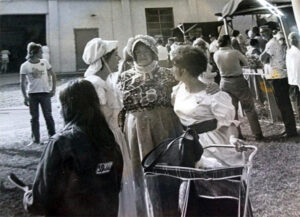
The original mid-18th-century wharf is no longer standing at Charlestown, but the town has built a reproduction of the wharf at the end of a stone pier that was laid over the remains of the original cribbing for archeological conservation. The wharf serves as a practical reminder of the part that Charlestown and the North East River played in the commercial history of Maryland.
Charlestown today is a small, water-oriented municipality with a population of about 1,500 people, four marinas, a general store, two restaurants, an elementary school and a Post Office. The townspeople are content with it just the way it is, a quiet, river community.
